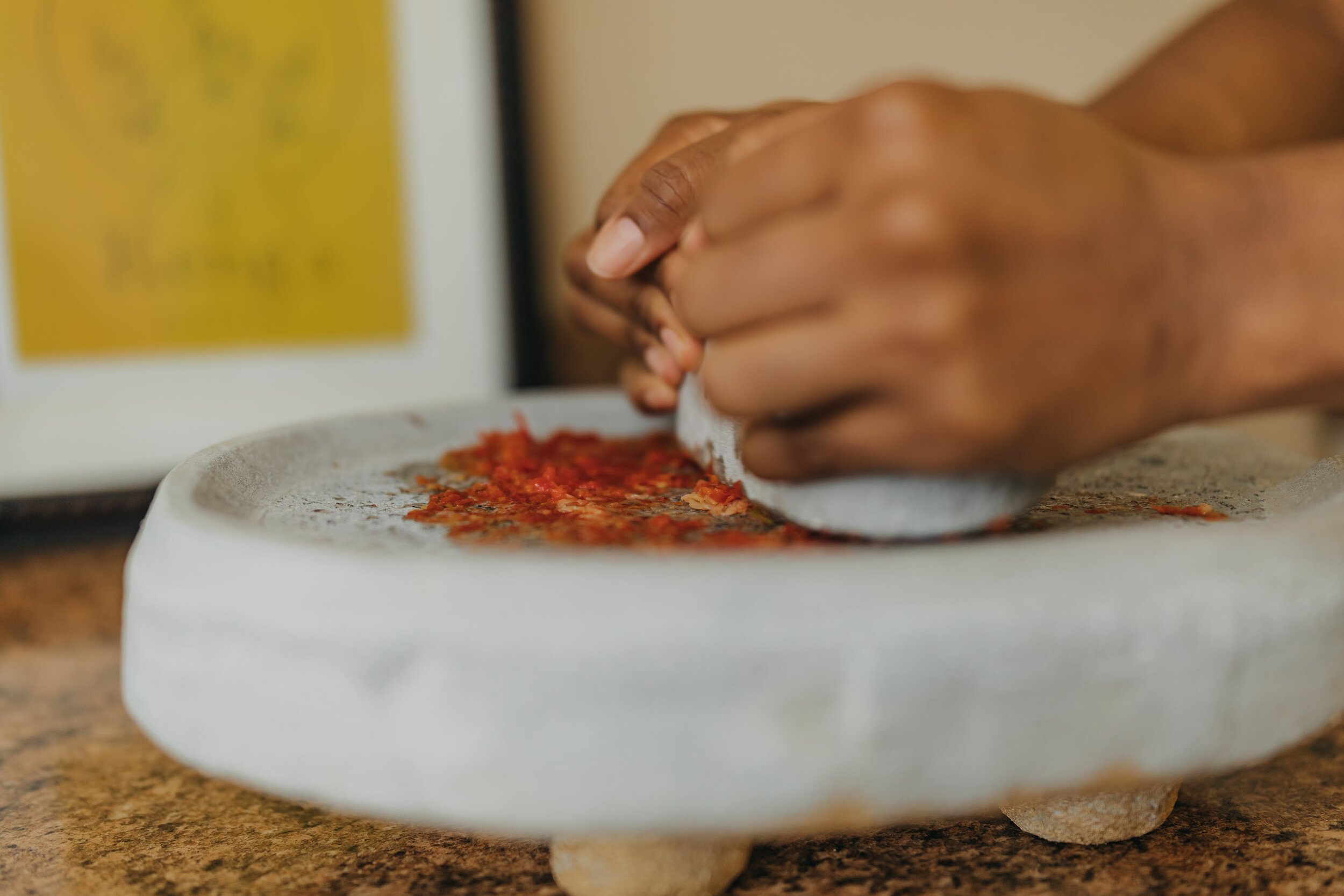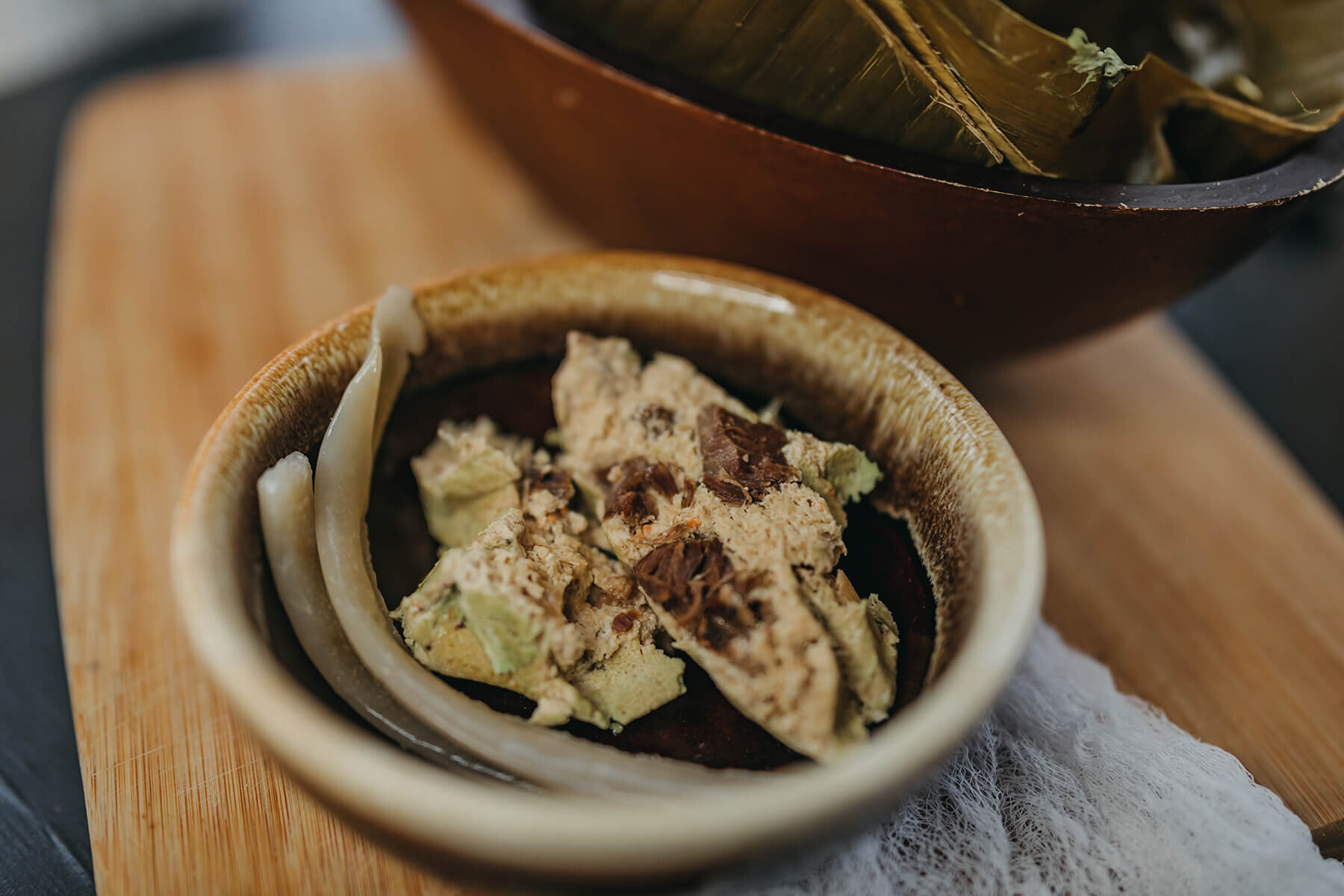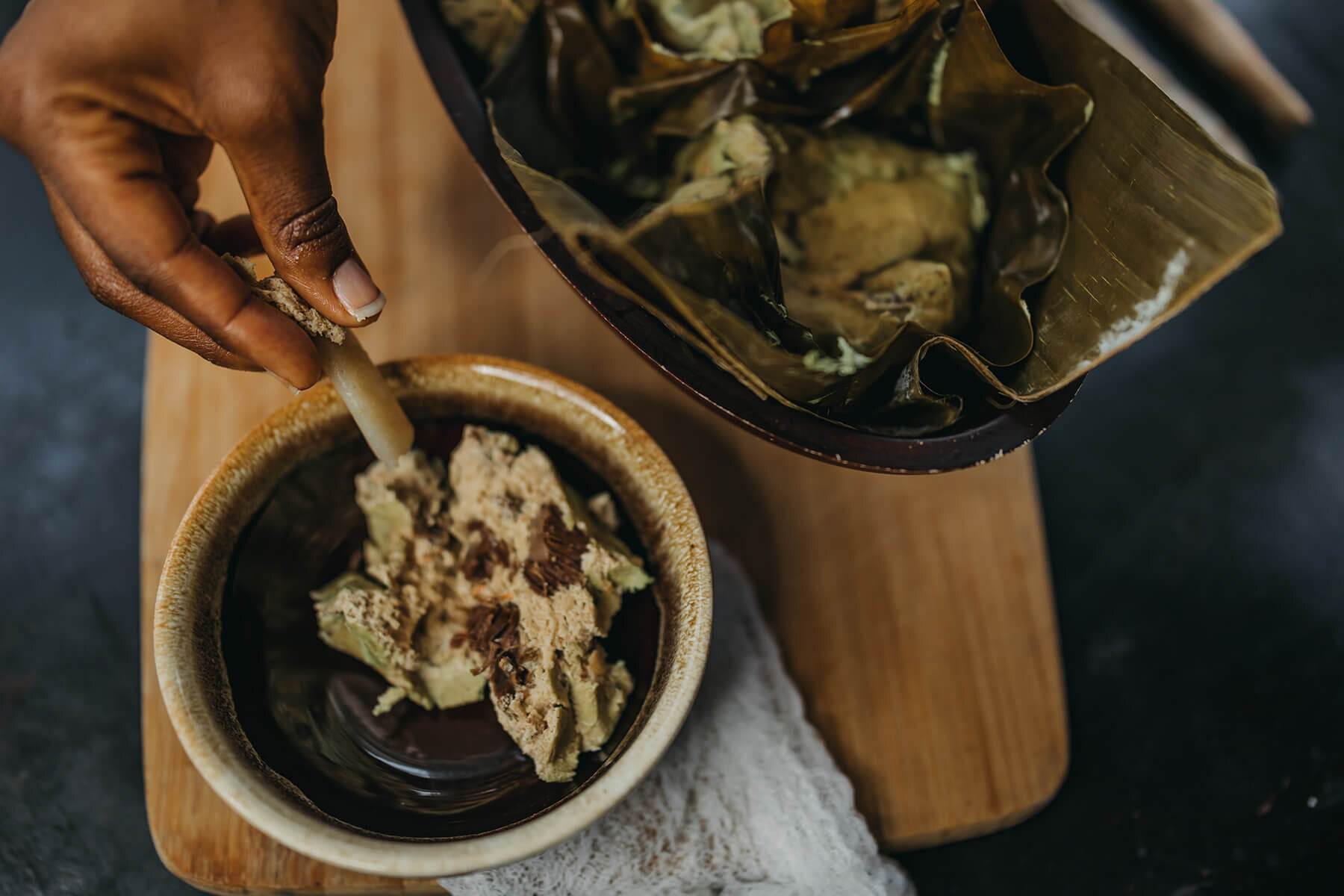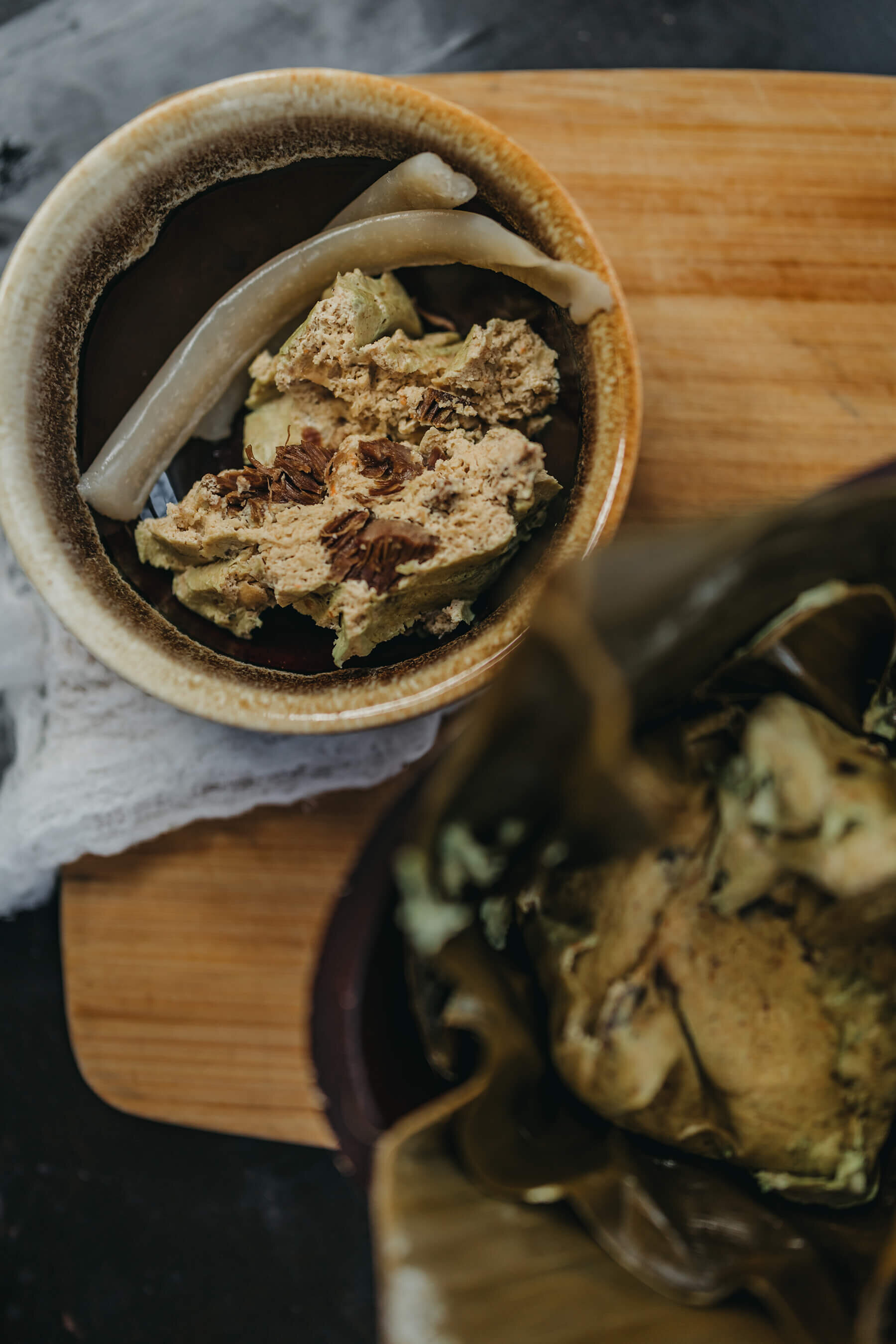Cameroonian Egusi Pudding
Chai! Egusi Pudding! Ngondo Nya Mukon! Gâteau au met de Pistache Camerounais! Where can I even start with this tantalizing dish?! Let’s try to start from the beginning-
Though the origins of this particular dish are harder to trace, Egusi Pudding is known to be a part of the food culture of the people of the Northwest, Littoral, West and Central Regions of Cameroon. Traditionally, Egusi Pudding is a dish of honor and importance that’s prepared by a woman and served to a man of high significance in that woman’s life. Egusi is what is referred to as melon seeds and is the foundational ingredient in making Egusi pudding.
The melon seeds are a special favorite to the wild animals in the farm making it hard to reap the great quantity needed to make Egusi Pudding. Even Egusi Soup, a dish that doesn’t need as much Egusi as Egusi pudding does (and is a more accessible dish to everyone in the family), may be prepared only twice a year because of the rare capability of harvesting the melon seeds in large quantities. All of these factors make Egusi pudding a very valued dish in village settings.
When a woman serves Egusi to a man, it shows her loving sacrifice through toiling in the farm and hours in the kitchen. A man feels highly honored and appreciated when a woman celebrates him with this delicacy. It also doesn’t hurt that egusi has medicinal values to support a healthy prostate, so serving this dish also shows an appreciation for him as a man.
In our modern day, Egusi pudding is a little more accessible to everyone than in the past. However, its valued traits still make it a rare delicacy only to be spotted at wondrous occasions like traditional weddings, special hostings, and fundraising events.
When you do get the chance to indulge in Egusi Pudding, you’ll experience an extraordinary play on texture and flavor from moist and sponge-like to smoky and savory. Lucky for you, you may get the chance to indulge in Egusi Pudding soon! Click play on the video below to cook along with me or scroll past the video to follow the written instructions.
Dish: Egusi Pudding
Country: Cameroon
Geographic Location: Northwest, Littoral, West and Central Regions of Cameroon
Ethnic Group: Cameroonian Multicultural Dish
C A M E R O O N I A N E G U S I
P U D D I N G R E C I P E
Ingredients
b. 2 Pounds Beef
c. ¼ Cup of Deboned 1 Medium Size Smoked Mackerel Fish
d. ¼ Cup Ground Crayfish
e. 2 Habanero Peppers
f. ½ Cup Cooking Oil
g. ½ Teaspoon Bush Pepper
h. 1 Medium Size Onion Chopped
i. 4 Cloves Garlic
j. 1 Teaspoon Ginger Powder or Puree
k. 2 Eggs (Optional)
l. Bouillon to taste
m. Salt to Taste
Prepping the Banana/Plantain Leaves
When cooking Egusi Pudding the traditional way, we use banana or plantain leaves to wrap the Egusi Pudding batter into a bundle. Freshly harvested banana/plantains leaves have a fragile texture that can easily rip. To prevent the leaves from ripping, one method is to “Warm the Leaves.” This old school method of heat treating the leaves is done by waving the leaves from side to side over an open flame. Do not forget to wave the leaves! This will prevent it from burning.
If you have more of a modern kitchen, an alternative method of treating the banana/plantain leaves is to simply boil the leaves in water for 30 minutes. Heat treating the banana/plantain leaves through either method is also important because it makes the leaves smooth and pliable. The heat also releases a natural oil in the leaves that adds a unique flavor to the Egusi Pudding. Click the video below for a visual instruction on how to heat treat banana/plantain leaves.
Note: If you do not have banana/plantain leaves you can use a parchment paper.
Egusi Cooking Instructions
2. Wash the beef thoroughly and place it into a pot. Add bouillon and enough water to cover the level of the meat in the pot and allow it to simmer on low heat.
3. Blend the garlic and habanero peppers into a puree and set aside.
4. Add onion, ginger powder, bush pepper, salt, habanero-garlic puree and the smoked fish into the pot. Mix well for the ingredients to combine and allow to cook on low heat until the meat is done with at least 4 cups of stock left in the pot.
5. Turn off the stove then remove the beef and the fish from the pot. Pour the stock into a bowl and set aside to completely cool at room temperature for a later use.
Note: If using eggs, it is important to let the stock cool to room temperature so the heat from the stock does not cook the eggs.
6. Pour the ground Egusi into a clean mixing bowl. Gradually add the beef/fish stock from step 4 into the Egusi then mix continuously until the Egusi reaches a fluffy texture.
7. Add the crayfish, eggs, cooking oil, beef and the fish into the Egusi and mix well then set aside.
8. Place a fuel paper into a deep small bowl and line the inside with the heat treated banana leaves.
9. Scoop a cup of the Egusi pudding batter and pour it inside the leaf. Wrap it into a bundle.
Scoop Egusi batter into bowl.
10. Repeat step 9 until you have finished you Egusi batter.
11. Line the bottom of your pot with plantain leaves.
12. Place the bundles into a pot and add hot water to immediately start the cooking. Cook on medium to high heat for 2 hours until done. Add water as needed to prevent the Egusi bundles from burning.
13. Serve the Egusi Pudding and enjoy with your choice of Bobolo, Miondo, Yam, Dodo or Sweet Potatoes.




















